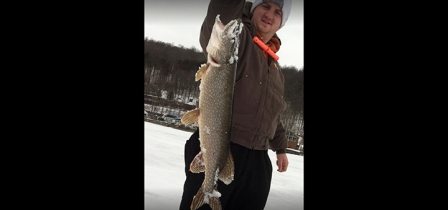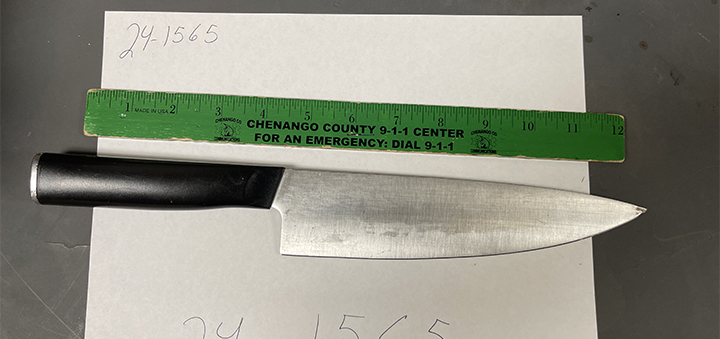Winter Is Coming...Time To Prepare For Ice Fishing Season
Published:
December 7th, 2017

Eric Davis
Mayhood's Sporting Goods
CHENANGO COUNTY – Now is the time to get ahead of the game and to start preparing your ice fishing equipment. All it takes is one or two harsh cold fronts to turn open water into solid black ice this time of year. Some years, there is fishable ice before New Year’s Day.
If you are done deer hunting and need something to do that makes you think about the outdoors, grab your jigging rods and tipups to get them ready.
At the beginning of every ice fishing season, I like to put fresh line on all of my jigging rods. When I fished in a lot of bass tournaments in high school, I put fresh line on every week. I didn’t want to have a fish break off because the line was old and weak. While every week is a tad extreme for the casual ice fisherman, once a year should be plenty.
Remember not to overfill the spool the reel. I stop at about 2/3 capacity of the spool. This helps control the line as it wants to unravel off the spool. It has the memory from being stored on the larger spool that you buy it on at the store.
If you don’t use spring bobbers on your jigging rods to watch for strikes, give bright colored lines a try. I like the Suffix line that comes in fluorescent orange. This makes it easier to watch the line for any movement as it contrasts with dark black ice and with white snow, once snow accumulates on the ice. Yellow line works well also.
For tipup maintenance, I like to unspool 10 yards or so and inspect the tipup line and swivel for any noticeable damage. I will replace the leader material every year. For “small fish” tipups, I like to use 6 pound fluorocarbon and for the “big fish” tipups I go with either 10 or 12 pound fluorocarbon.
I typically will make the leader 6-8 feet long. If I plan on going after big toothy fish, such as northern pike, I will use steel leaders to avoid the fish cutting the line. Inspect the spool on the tiptop to make sure it is smoothly spinning.
You may need to put a small dab of grease on the shaft of the spool to get it operating smoothly. Set the tipup like you would while fishing and make sure that the flag is tripped when line is taken from the spool.
Once I have gone through the rods and tipups, I will go through my tackle boxes to make sure everything is organized the way I like it. I use a small box for my jigs that has foam in it so you can stick the hook into the foam to hold the jig in place. I keep my vertical jigs on one side and my horizontal jigs on the other side. They are organized by size and color so I can quickly find a jig if I need to swap to what the fish are biting.
I have started experimenting with using plastic jig trailers as opposed to live bait, such as spikes or mousies, and have a small box where I keep the plastics. I don’t catch as many fish but they tend to all be bigger fish when using the plastics.
I release 99% of the fish I catch usually with only a few outings a year devoted to helping someone else fill the freezer (I’m allergic to eating fish) so I don’t mind catching fewer fish. All of the supplies I use for tipup fishing I keep in their own tackle box. I have the hooks organized by size, color, and whether they are single or treble hooks. The sinkers and swivels are organized by size also.
If you use a fish finder or power auger, dig them out and give them a good once-over. Throw any batteries on the charger to get them ready. If you use a gas auger, give the motor some attention. If your hand auger seemed like it wasn’t working as great last season, consider looking for replacement blades. You can even find places that will swap blades with you and they will sharpen your old blades then swap them with another fisherman who wants fresh blades. Get your shanty out and set it up. You can see if any rodents have chewed on the fabric or if the rope to pull it needs to be replaced before it breaks when your out on the middle of the lake.
As I have come to realize, it is often easier and less expensive to take a few minutes to inspect your gear and catch something that needs to be fixed instead of having to replace things after they break.
Comments






